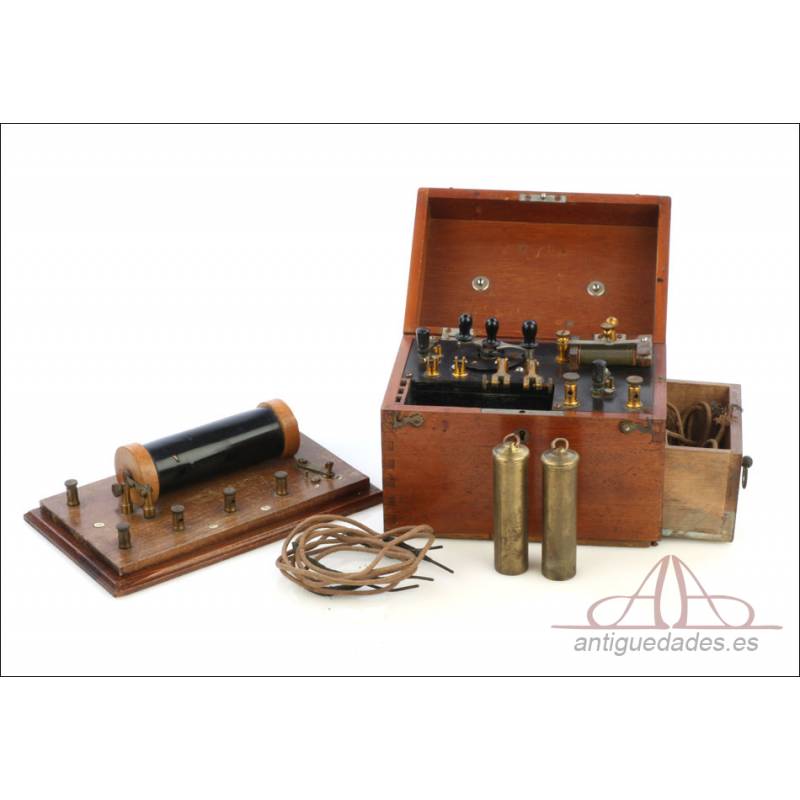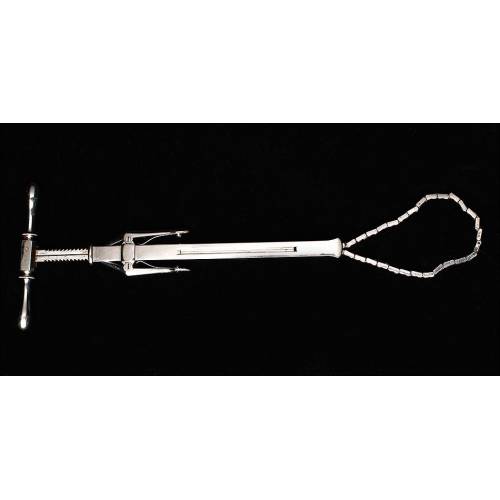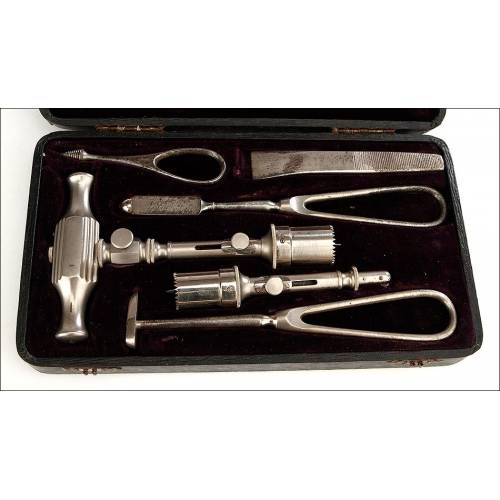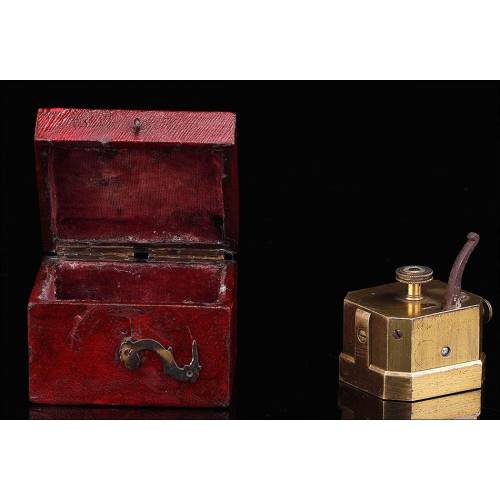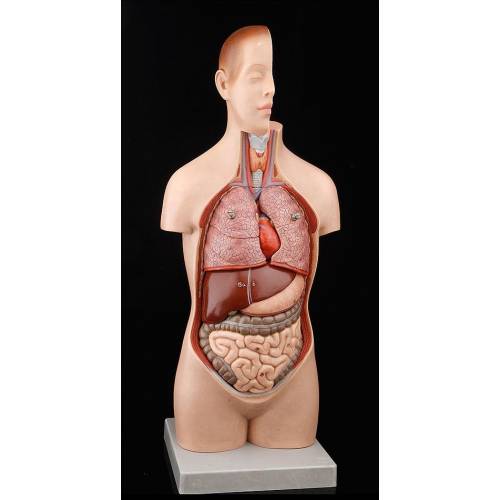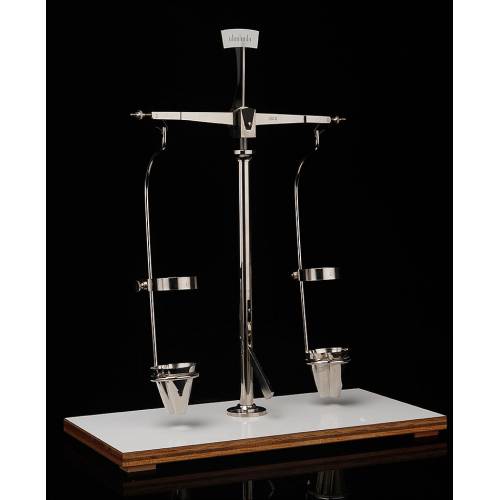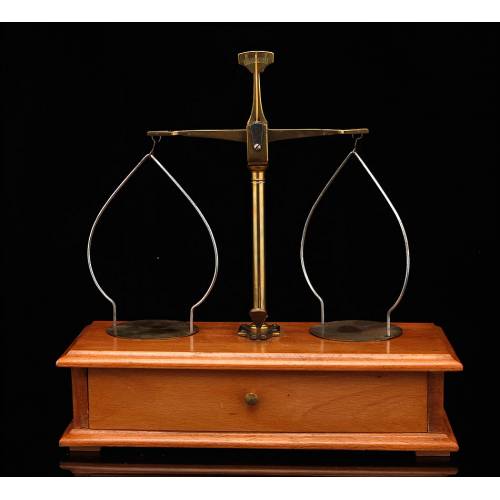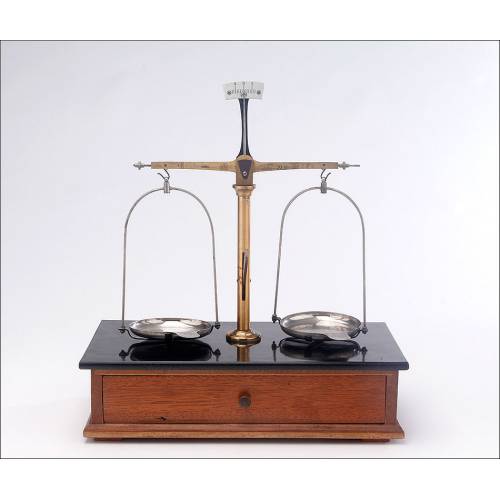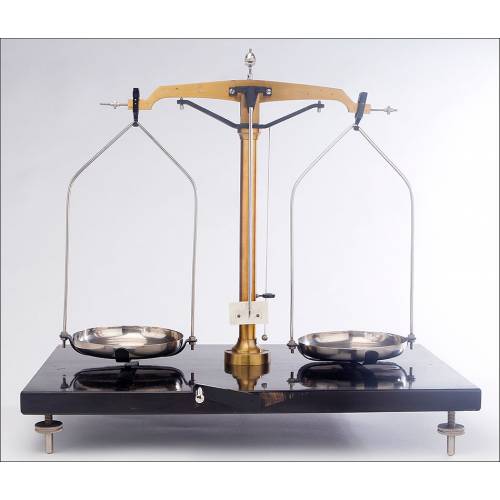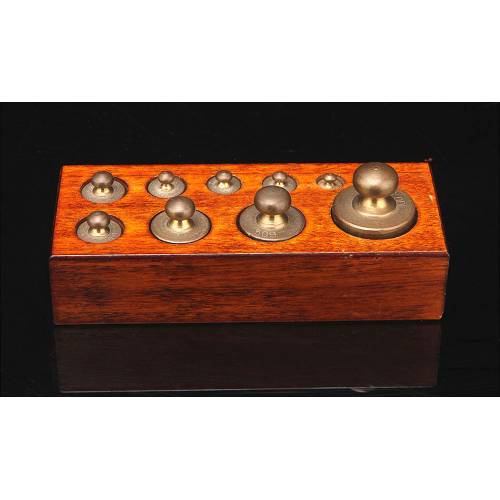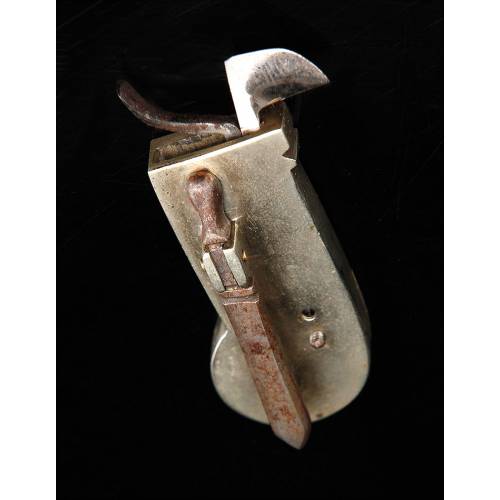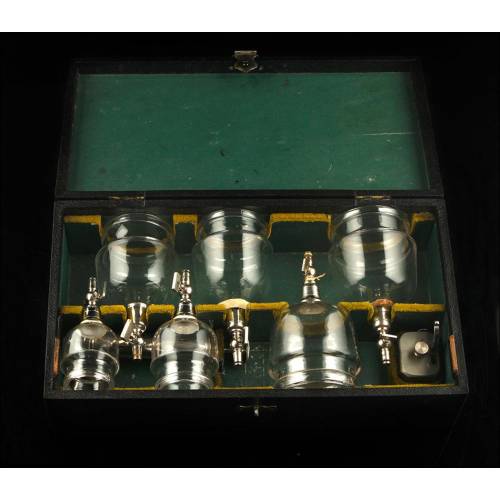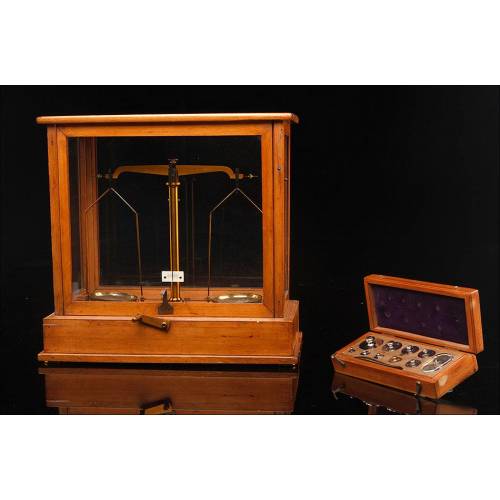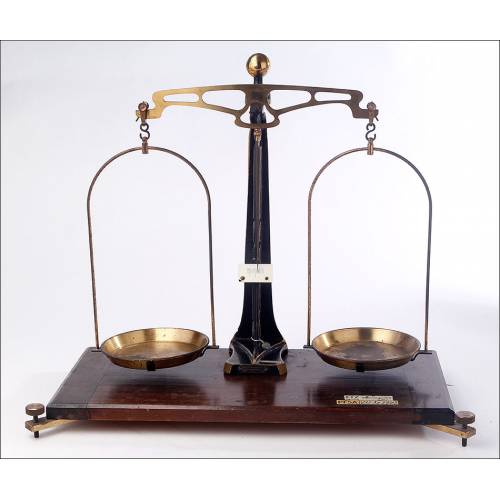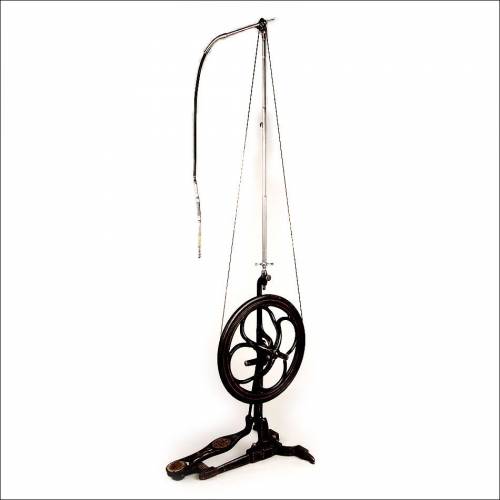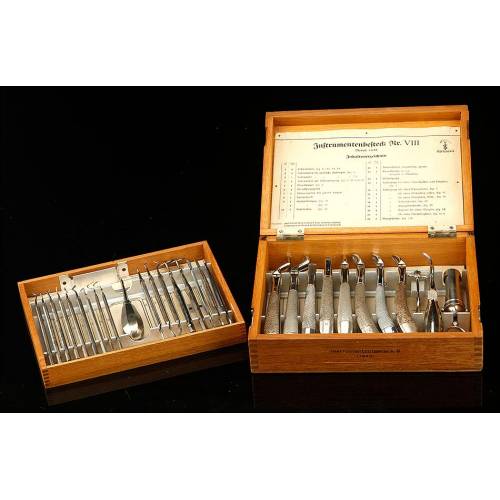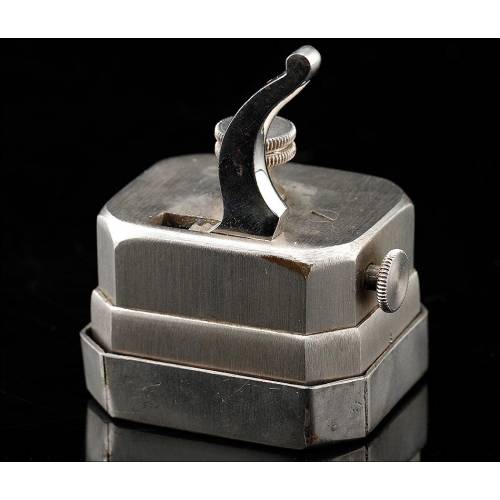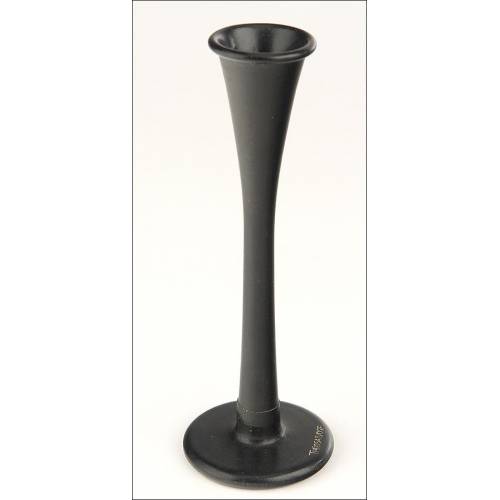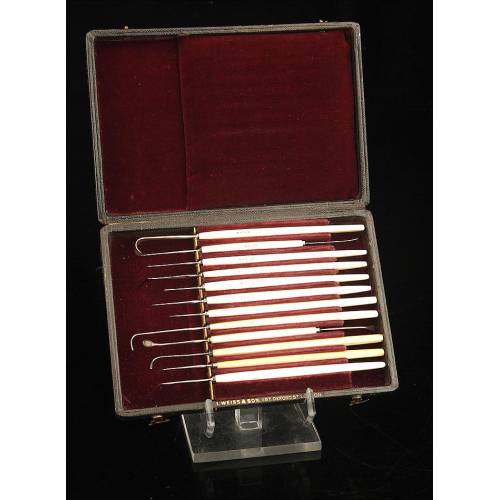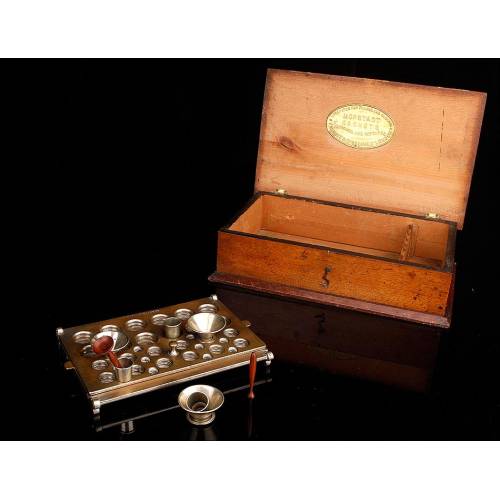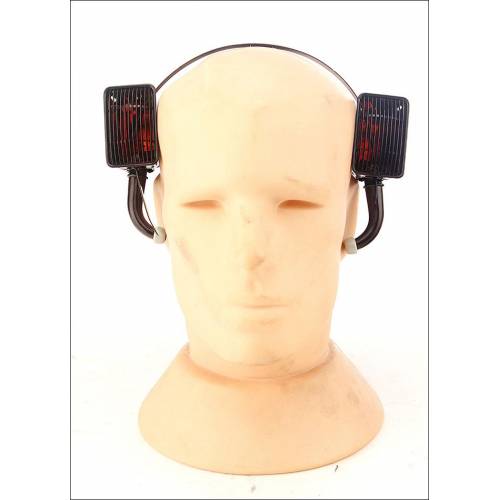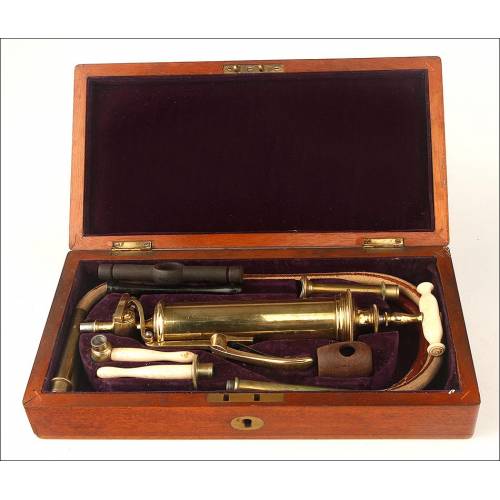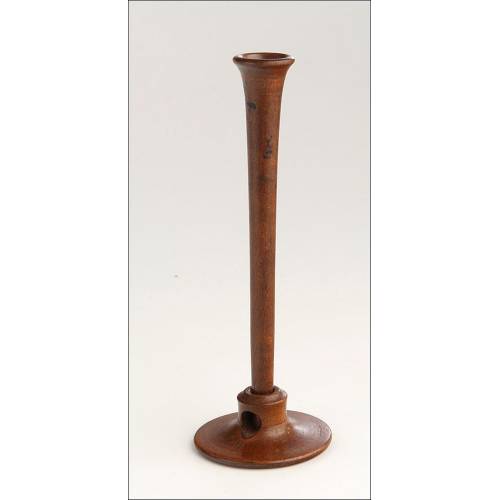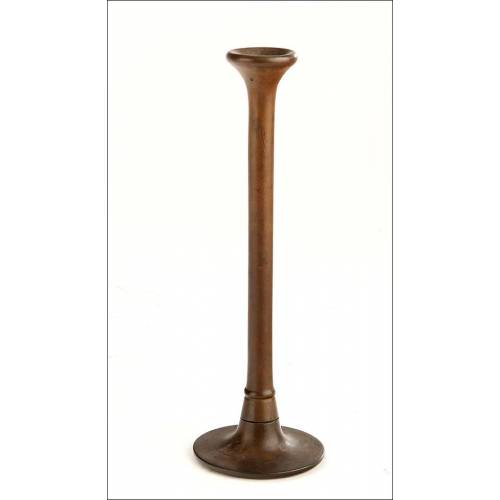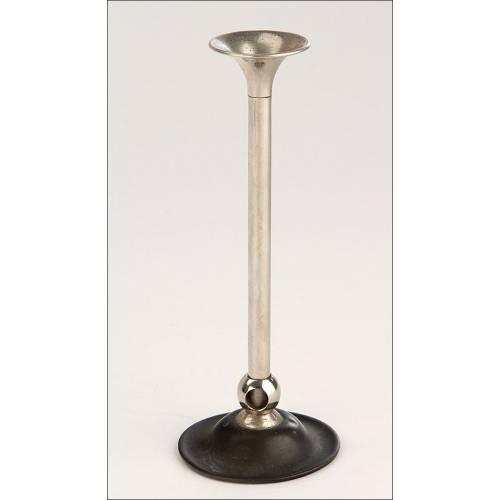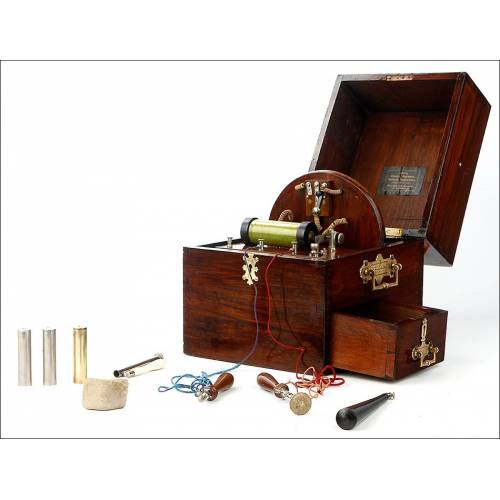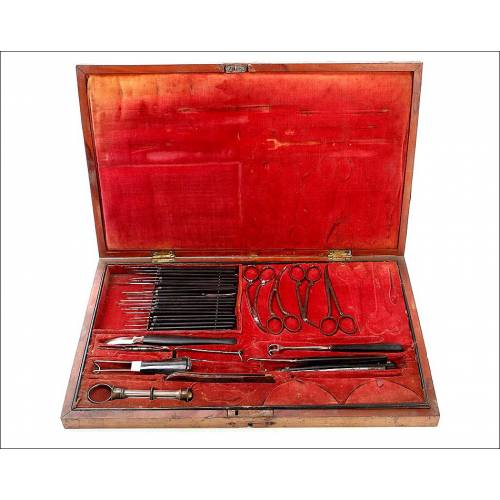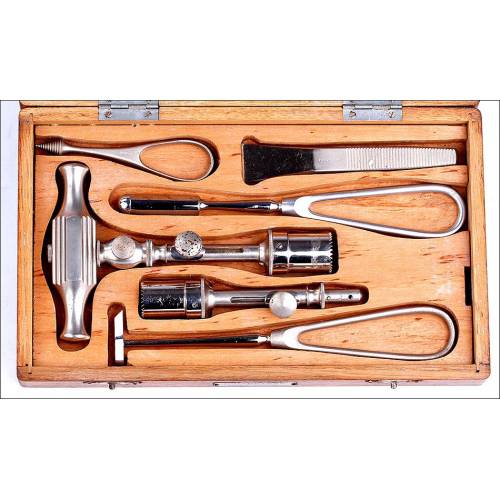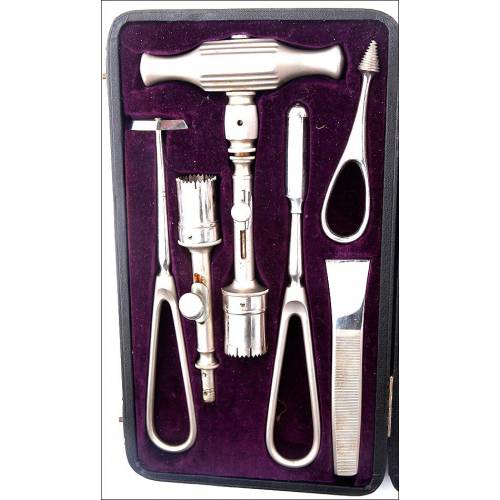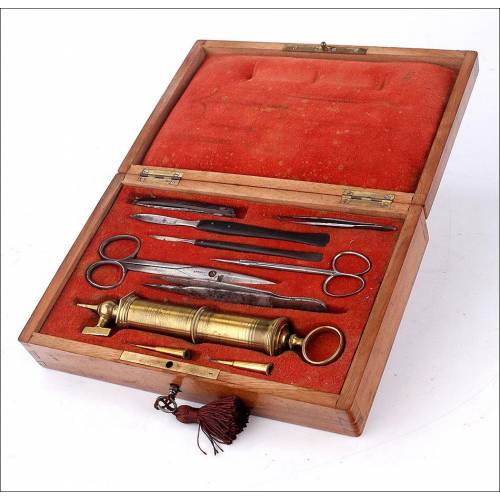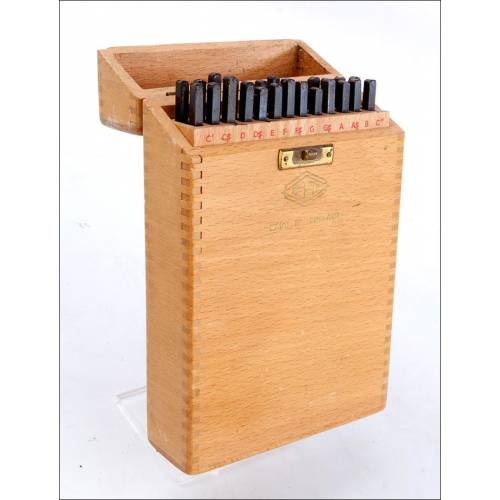D-151
Antique Medical Electrotherapy Device. Circa 1900
Original medical electrotherapy device made in the early 20th century. Complete and in good condition.
Sold!
Fascinating antique medical electrotherapy device made circa 1900, in good condition and with all its original component parts. The device comes in a solid-mahogany wooden chest, with dovetail joints at the corners and a removable side drawer. The chest has a lid which is connected by hinges and remains in good condition, showing only slight signs of the trace of time that provide it with an undeniable charm. The metalwork, the handle and the hinges are original and are also very well preserved. If we open the chest, inside we will see a black plate with a series of elements and mechanisms mounted on the surface. There are different brass and silvery-metal pieces, and black wooden knobs and pullers too. On the other hand, the side drawer contains wires and two brass cylinders used to apply the currents. As well as the chest, this device also includes a beech-wooden base with an induction coil mounted on it. The base includes some brass pieces and is marked with a series of black capital letters printed on small white circles. This wonderful antique medical electrotherapy device deserves to belong to a great turn-of-the-century collection of medical antiques. Dimensions: Box: Width: 7.48 in / 19 cm. Depth: 4.92 in / 12.5 cm. Height (Closed): 5.12 in / 13 cm. Induction Coils Base: Width:8.46 in / 21 cm. Depth: 5.3 in / 13.5 cm. Induction Coil: Lenght: 4.92 in / 12.5 cm.Electrotherapy - History Electrotherapy is a medical technique which uses electrical currents to treat pain and other therapeutic purposes. Its origin dates back to the ancient Rome, where doctors used electric eels to apply currents to their patients. In the 16th century William Gilbert, who was appointed physician to Queen Elizabeth I, published the first book where electric and magnetic phenomena were identified and thoroughly des cribed. In the following centuries electricity was deeply studied and used for therapeutic purposes by different scientist and physicians such as Luigi Galvani or Duchenne, who studied why electric currents provoked muscle spasm in the places known as motor points. Electrotherapy experienced a great boom in the 1930s though after World War II the interest in the subject declined considerably. In the 1980s there was a revival of the therapy, especially for rehabilitation, pain control and scar tissue.

